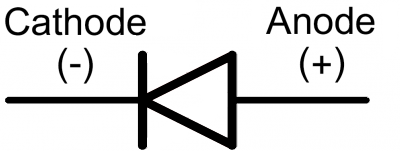


How does the proton exchange membrane work in a fuel cell? Anode Reaction: 2H 2 O → O 2 + 4H + + 4e – Cathode Reaction: 4H + + 4e – → 2H 2 At the cathode, hydrogen ions combine with electrons from the external circuit to form hydrogen gas. The electrons flow through an external circuit and the hydrogen ions selectively move across the PEM to the cathode. How does hydrogen get to the cathode in electrolysis? Fumasep FAS-PET-130 is a PET (Polyester) reinforced Anion Exchange Membrane (AEM) with low resist. Nafion™ Membrane is used to separate the anode and cathode compartment of Proton Exchange Membran. Nafion™ tubing is a highly selective, semi-permeable membrane to water vapor. What kind of membrane is used for anion exchange? Water reacts at the anode to form oxygen and positively charged hydrogen ions (protons). Polymer Electrolyte Membrane Electrolyzers. Where does hydrogen move in an electrolyte membrane? Positively charged cations always move towards the cathode and negatively charged anions move towards the anode, although cathode polarity depends on the device type, and can even vary according to the operating mode. What type of ions must flow into the cathode? The negatively charged electrode will attract positive ions (cations) toward it from the solution. The positive anode attracts anions toward it, while the negative cathode attracts cations toward it. The battery pumps electrons away from the anode (making it positive) and into the cathode (making it negative). The Electrolyte is the medium that provides the ion transport mechanism between the cathode and anode of a cell. The Anode is the negative or reducing electrode that releases electrons to the external circuit and oxidizes during and electrochemical reaction. Therefore oxidation takes place at the anode, where electrons are lost, and reduction takes place at the cathode where electrons are gained. The substance being oxidized is losing electrons, and those electrons are gained by the substance being reduced. What happens to the electrons that are on the anode on the cathode? Oxidation happens at the positive anode because this is where negative ions lose electrons. Reduction happens at the negative cathode because this is where positive ions gain electrons. Oxidation of ions or neutral molecules occurs at the anode, and reduction of ions or neutral molecules occurs at the cathode. The key process of electrolysis is the interchange of atoms and ions by the removal or addition of electrons to the external circuit. What happens at the cathode and anode during electrolysis? It can donate some of its excess electrons to such cations or to other species in the liquid being electrolyzed.

The cathode is an electron donor and can cause reduction to occur. They move from anode to the cathode in the external circuit. The electrons are supplied by the species getting oxidized. The reaction at the anode is oxidation and that at the cathode is reduction. The medium that allows the electric charge to flow between the cathode and anode is known as the electrolyte. What is the barrier between the anode and cathode called?Ī separator creates a barrier between the cathode and anode, preventing the electrodes from touching while allowing electrical charge to flow freely between them. At the same time, negative chloride ions are attracted to the positive electrode (anode). This is because positive calcium ions are attracted to the negative electrode (cathode), where they gain electrons to form calcium atoms. What type of ions are attracted to anodes? OH – ions are attracted to the anode, lose electrons and form oxygen gas. H+ ions are attracted to the cathode, gain electrons and form hydrogen gas. What are the products at the anode and the cathode? 8 How does hydrogen get to the cathode in electrolysis?.7 What kind of membrane is used for anion exchange?.6 Why do positive ions go to the cathode?.5 What is anode cathode and electrolyte?.4 What happens at the cathode and anode during electrolysis?.3 What does the cathode (-) do to ions?.2 What type of ions are attracted to anodes?.1 What are the products at the anode and the cathode?.


 0 kommentar(er)
0 kommentar(er)
